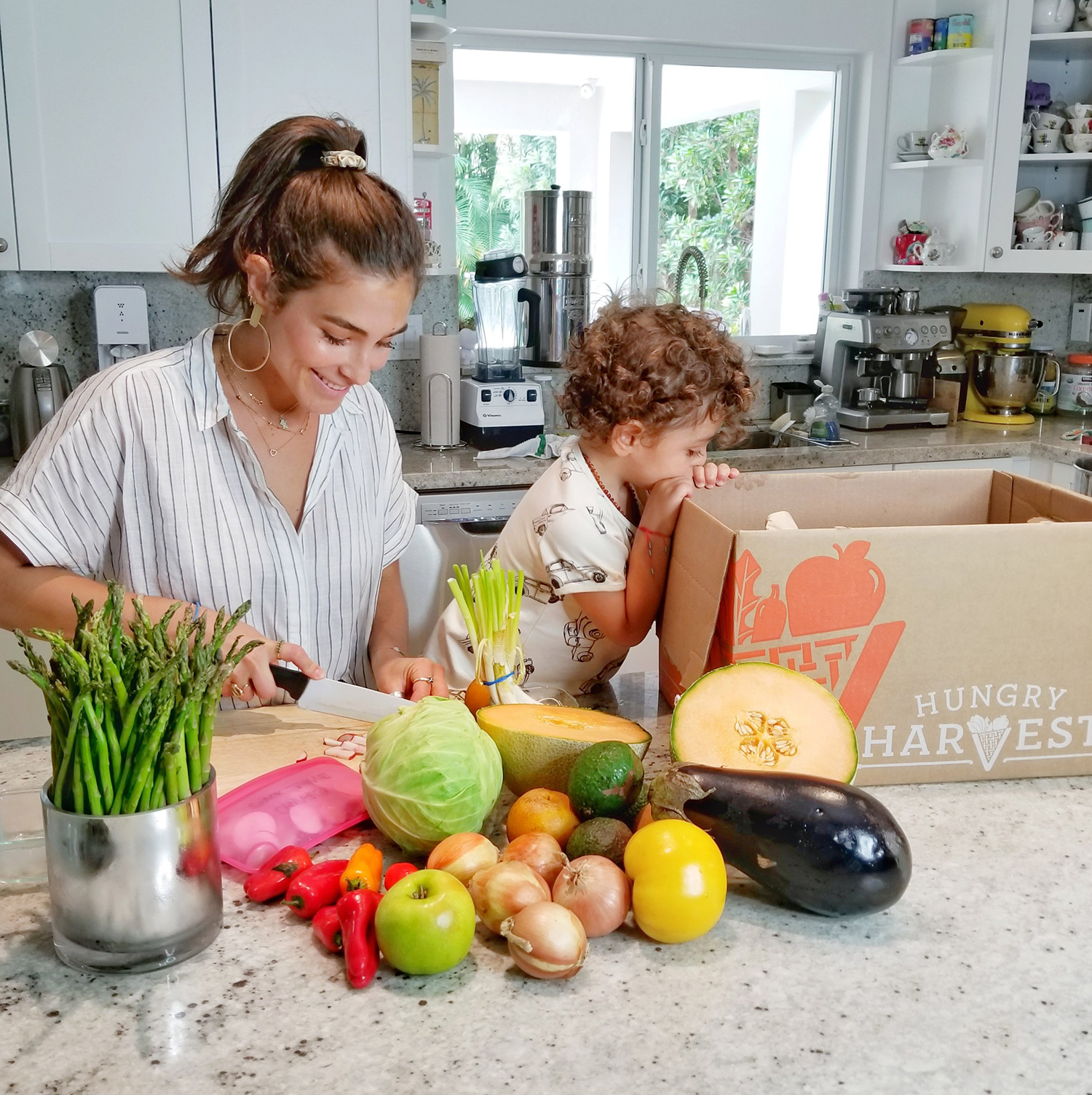A fresh look at storing your fruits & veggies
- Laura DeVito, Hungry Harvest
What good is rescuing produce if you let it go to waste in your kitchen? Properly storing your fruits and vegetables can not only extend their shelf life, but also preserve their flavor. Take our quiz and see how storage savvy you really are!
1.
Most fruits and veggies should be stored together in the fridge.
True or False?
False.
Some fruits give off a gas called ethylene, while others are sensitive to it. It is a good idea to keep them separate from each other or else you risk quickening the ripening process.
2. Onions, garlic and potatoes like to hang out together.
True or False?
False.
Onions and garlic are cool to be together, so long as there is space for air to circulate around them, but keep potatoes an arms length away or they can start to prematurely turn green or sprout eyes.
3. A fruit bowl on your counter is a good way to store your fruit - plus it is pretty too!
True or False?
TRICK QUESTION!
If your fruit is not ripe enough to eat, then by all means, keep things like pears, peaches, plums, kiwis, mangoes, apricots, avocados, melons, and bananas on the counter. If they are ripe however, stick ‘em in the fridge to keep ‘em lasting longer.
4. The crisper really does keep produce crisp!
True or False?
TRUE (when used properly).
The purpose of the drawers in your fridge is to help control the humidity. Ethylene producing fruits should be kept in a drawer with the vent wide open (low humidity) in order to let the gas escape and thereby keeping them fresher longer. Leafy greens and other fruits and veggies that are either sensitive to ethylene or a loss in moisture should be stored in a drawer with the vent completely closed (high humidity).
5. It is ok to not wash the rinds of melons since they’re thick and you’re not going to eat them anyway.
True or False?
FALSE.
Bacteria can form on the rind and if you are slicing and serving with the rind intact, it can be easily transferred. Always wash the outside of your produce, just to be on the safe side.
6. When in doubt, freeze it!
True or False?
TRUE.
Most fruits and veggies taste just as great when eaten frozen or fresh. The key is to freeze them as soon as you think you won’t have enough time to eat them so that they don’t lose their flavor or integrity.
7. Asparagus likes to stand tall in a glass of water.
True or False?
TRUE.
By storing the ends of the stalks in water, they can still absorb it, keeping them fresh and firm longer - just like a fresh cut bouquet of flowers!
7. You should always wash your fruits and veggies before storing them.
True or False?
FALSE.
Moisture is good for your produce, but too much can cause them to turn slimey. Leafy greens can be submerged in cold water to remove dirt and debris and wrapped in paper towel, but everything else should wait until you’re ready to use it.
8. The expiration date on leafy greens sold in bags or clamshells is just for show.
True or False?
FALSE.
While there has been much debate over the consistency in food expiration dates, you should pay careful attention to this one. Even if the greens still look good to eat, bacteria may have started to form and it is not worth taking the risk. In general, you have about 1 - 5 days after the date - but look for signs like an off smell to tip you off that the greens are better for the compost than your belly.
10. Keeping produce in plastic bags helps produce stay fresh.
True or False?
While it is true that it is often a good idea to store your produce in a breathable bag, ideally, plastic should never be your first choice. An eco-friendly alternative is to use reusable storage bags like the ones made by our friends at Flip & Tumble. Lucky for you, we’re giving some away! For your chance to win check us out on Instagram now!
How do you score?
7 - 10 correct
You’re a produce storage master and could teach us a thing or two...go to our instagram post and share your favorite zero waste storage tips with the hashtag #freshlook
6 or less correct
You’re getting there, but if you want to make the most out of your produce, be sure to pick up some more pointers from our online produce storage guide
More Recommended Hungry Harvest Reads















